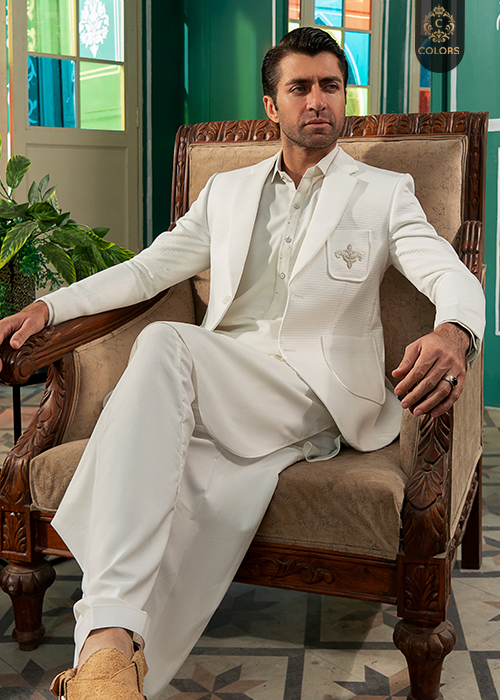Gents Suit Design: An In-Depth Guide
The suit is a cornerstone of men’s fashion, epitomizing elegance, professionalism, and timeless style. From the workplace to weddings, and from formal events to casual outings, a well-designed suit is a wardrobe essential for every gentleman. Over the years, gents suit designs have evolved to meet changing trends, yet the fundamental principles of tailoring and sophistication remain unchanged.
In this article, we’ll explore the different types of suits, their key design elements, and how to choose and style the perfect suit for various occasions.
1. The History of Suits
The modern suit, as we know it, can be traced back to the early 19th century when Beau Brummell, an English dandy, popularized the tailored look. This new style emphasized clean lines, simplicity, and structure, moving away from the flamboyant costumes of the past.
As time progressed, suits became more structured during the Victorian era and eventually evolved into the business suits of the 20th century. Today, suits are available in a variety of designs to cater to different preferences and occasions, blending tradition with modernity.
2. Key Elements of Suit Design
A well-designed suit is the result of careful attention to detail, tailoring, and fabric selection. Below are the core components that define a suit:
- Jacket
The jacket is the centerpiece of a suit and determines its overall style. Key features include:
– Lapels:
– Notch Lapel: The most common and versatile, suitable for business and casual wear.
– Peak Lapel: More formal and traditional, often found on double-breasted or evening suits.
– Shawl Lapel: Smooth and rounded, ideal for tuxedos or dinner jackets.
– Buttons:
– Single-button jackets are trendy for formal occasions.
– Two-button jackets are the most common and versatile.
– Three-button jackets are less common but offer a classic look.
– Pockets:
– Flap pockets for a formal look.
– Patch pockets for a more casual feel.
- Trousers
Suit trousers should complement the jacket and maintain the suit’s overall design aesthetic. Features include:
– Flat-Front vs. Pleated: Flat-front trousers are modern and slim, while pleated trousers offer a classic, comfortable fit.
– Cuffs: Cuffed hems add a touch of formality, while uncuffed hems are sleek and contemporary.
- Shirts
The shirt acts as the foundation of a suit. Popular options include plain white, pastel shades, or subtle patterns for business and formal occasions.
- Waistcoat (Optional)
A waistcoat adds an extra layer of sophistication, making a suit three-piece. It’s especially common in weddings and formal events.
- Fabric
The choice of fabric greatly influences the suit’s look and feel:
– Wool: Durable and versatile, suitable for all seasons.
– Linen: Lightweight and breathable, perfect for summer.
– Cotton: Comfortable and casual, great for semi-formal events.
– Velvet: Luxurious and bold, often used for evening wear.
ATTENTION:This article delves into the diverse world of gents suit designs, highlighting the classic, modern, and trending styles, along with tips for choosing and styling the perfect suit.
3. Types of Gents Suit Designs
- Single-Breasted Suits
– The most common suit style, featuring one row of buttons.
– Ideal for business, weddings, and semi-formal events.
– Works well with slim and regular body types.
- Double-Breasted Suits
– Features two rows of buttons, offering a structured and formal appearance.
– Best suited for formal occasions and colder climates.
– Flatters taller and broader body types.
- Three-Piece Suits
– Includes a jacket, trousers, and a waistcoat, offering a polished look.
– Perfect for weddings, gala events, and high-profile meetings.
– Enhances the silhouette by adding layers.
- Slim-Fit Suits
– Tailored closely to the body, creating a sharp and modern look.
– Popular among younger professionals and fashion-forward individuals.
- Classic-Fit Suits
– Offers a more relaxed fit, prioritizing comfort without compromising style.
– Suitable for traditional settings and older gentlemen.
- Tuxedos
– Reserved for black-tie events, tuxedos feature satin accents and are paired with bow ties.
– Typically worn with a white dress shirt and patent leather shoes.
- Casual Suits
– Designed for informal occasions, featuring lightweight fabrics and relaxed fits.
– Can be styled with loafers or sneakers for a modern look.
4. Popular Suit Colors and Patterns
- Solid Colors
– Navy Blue: Versatile and professional, suitable for business and casual events.
– Black: Timeless and formal, ideal for evening wear.
– Gray: Neutral and adaptable, ranging from light to charcoal.
– Beige and Tan: Perfect for summer or casual settings.
- Patterns
– Pinstripes: Adds a formal and classic touch, often seen in business suits.
– Checks: Creates a bold and stylish statement, suitable for casual and semi-formal occasions.
– Herringbone: A subtle pattern that adds texture and depth.
Conclusion
A well-designed suit is more than just clothing; it’s an expression of personality, professionalism, and style. Whether you’re attending a business meeting, a wedding, or a casual gathering, the right suit design can elevate your confidence and leave a lasting impression. By understanding the different types of suits, their components, and how to style them, you can build a versatile wardrobe that meets all your sartorial needs.
